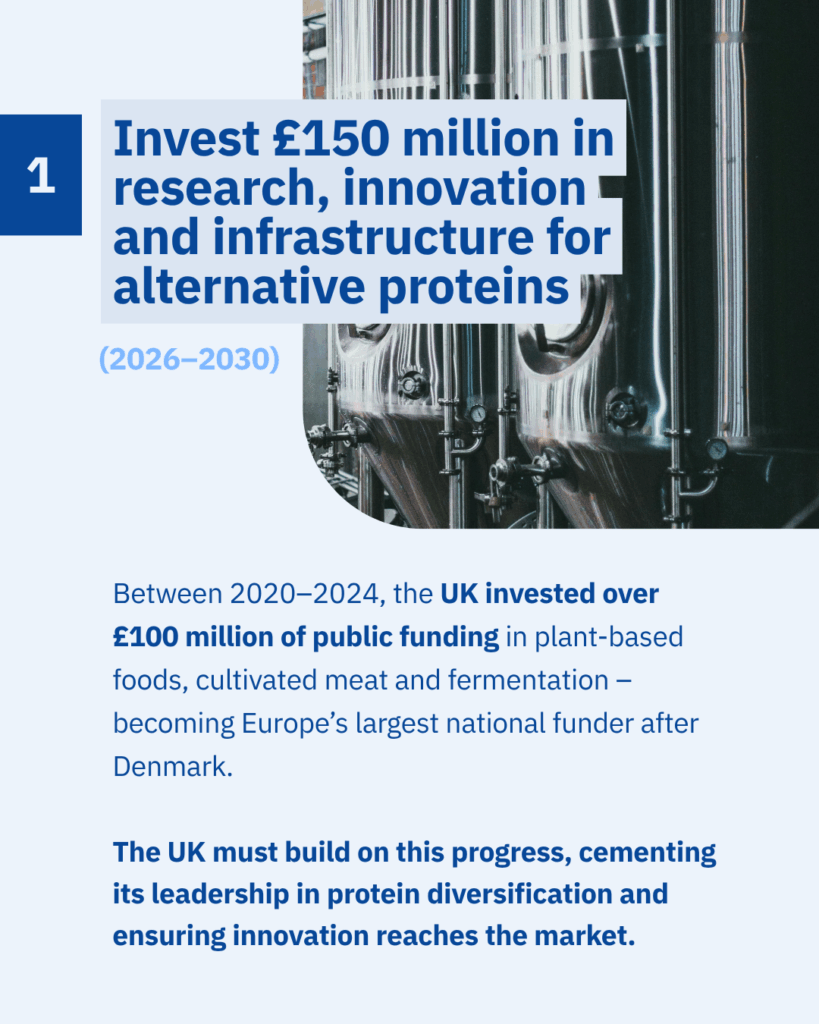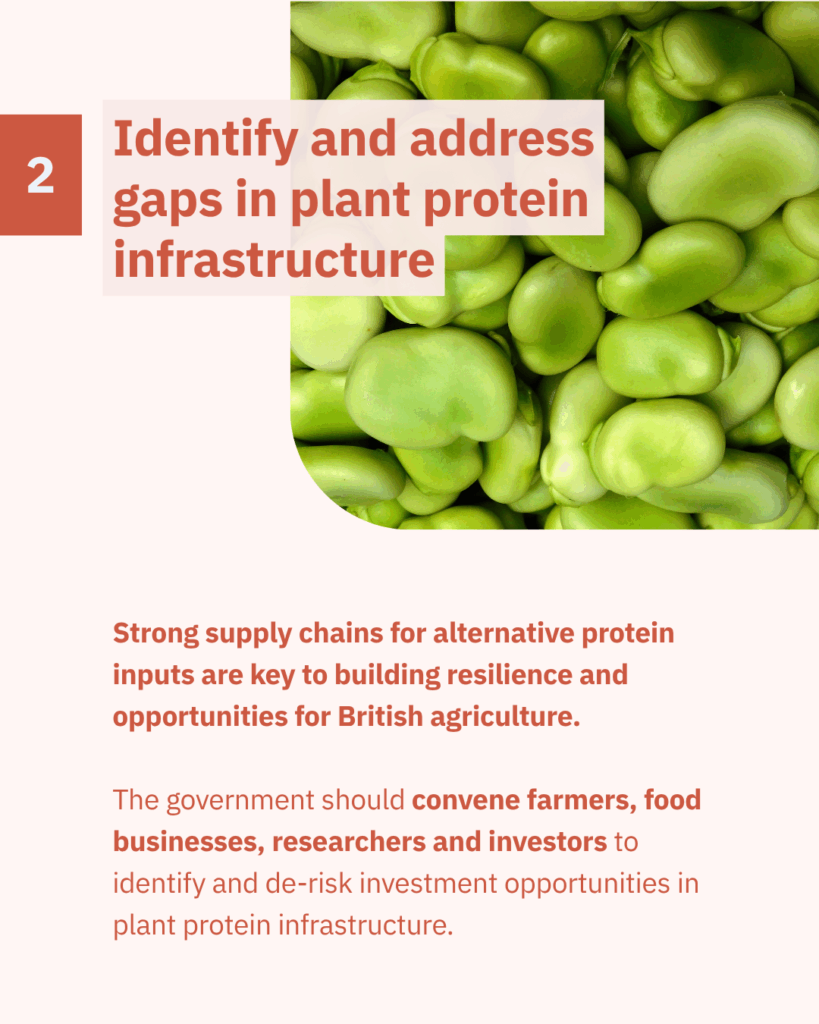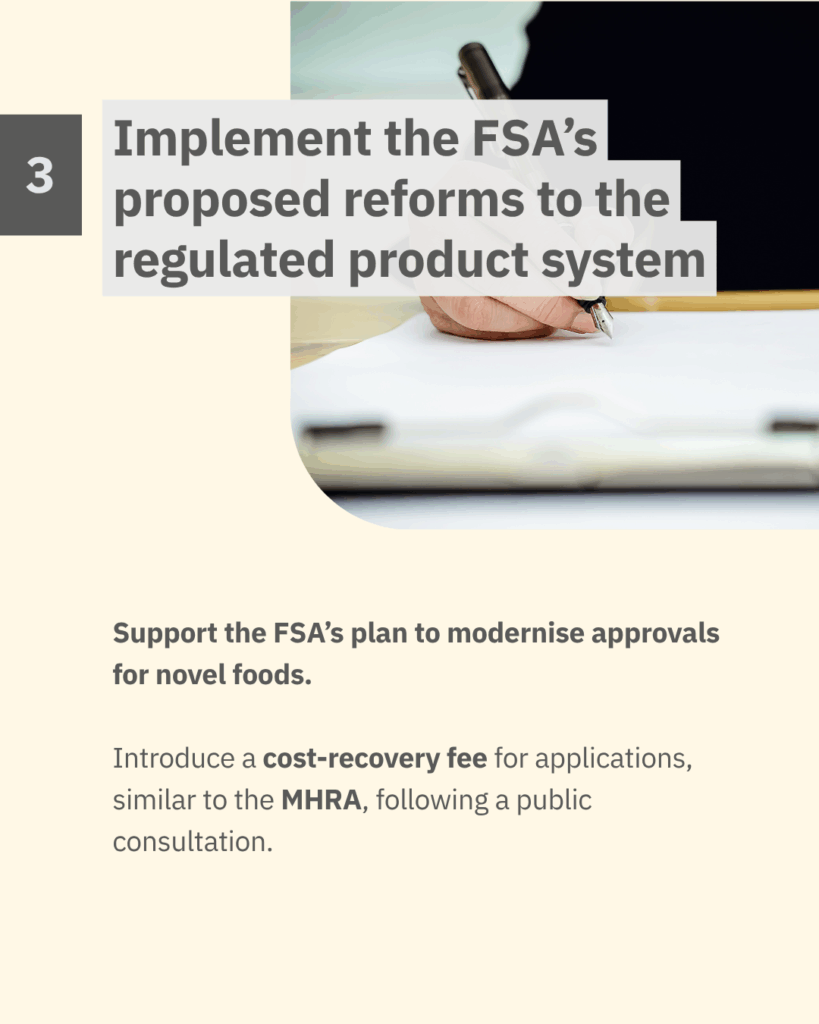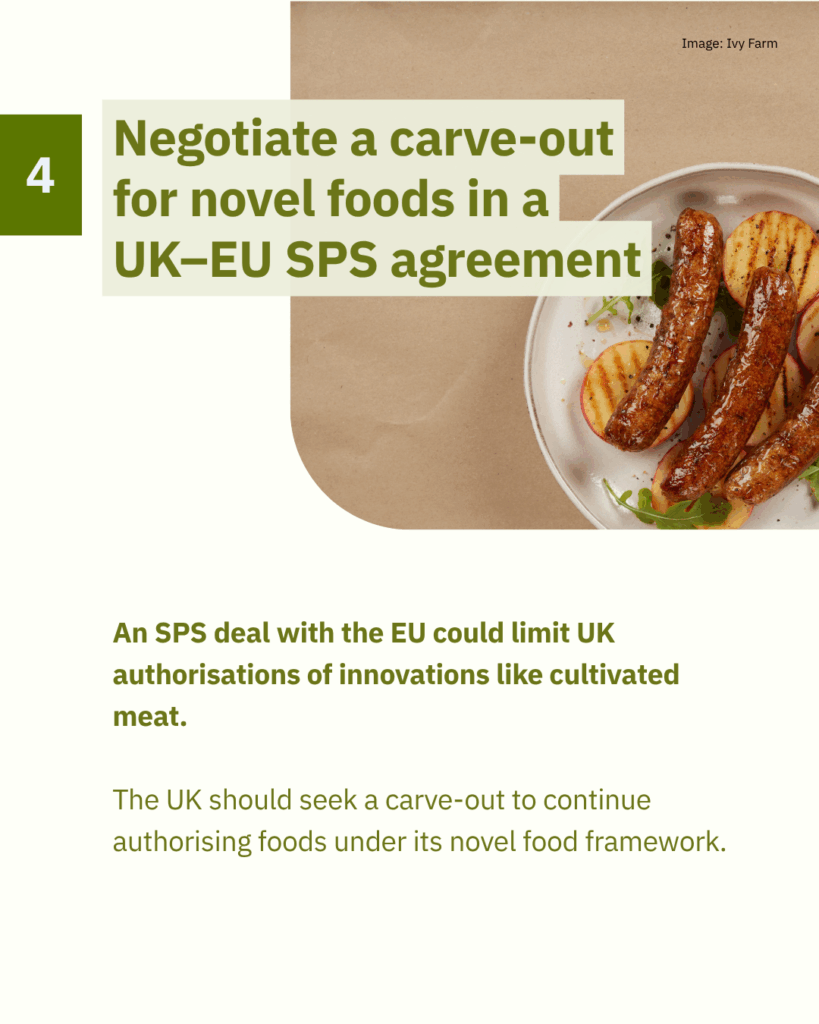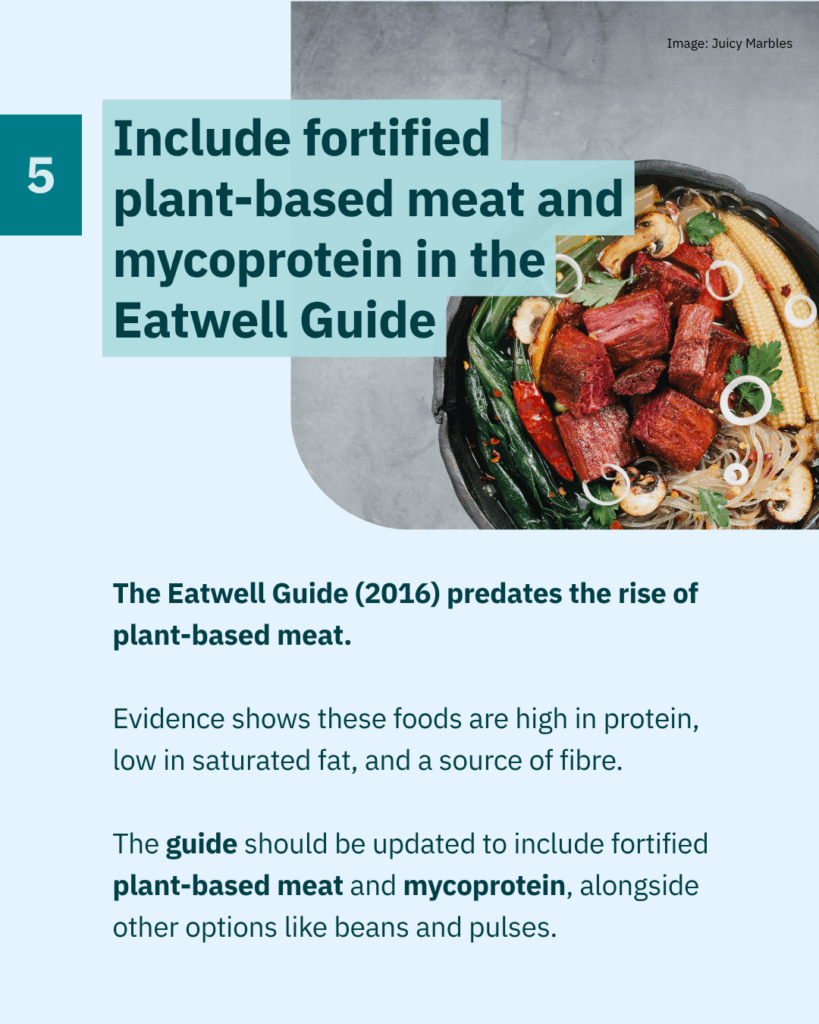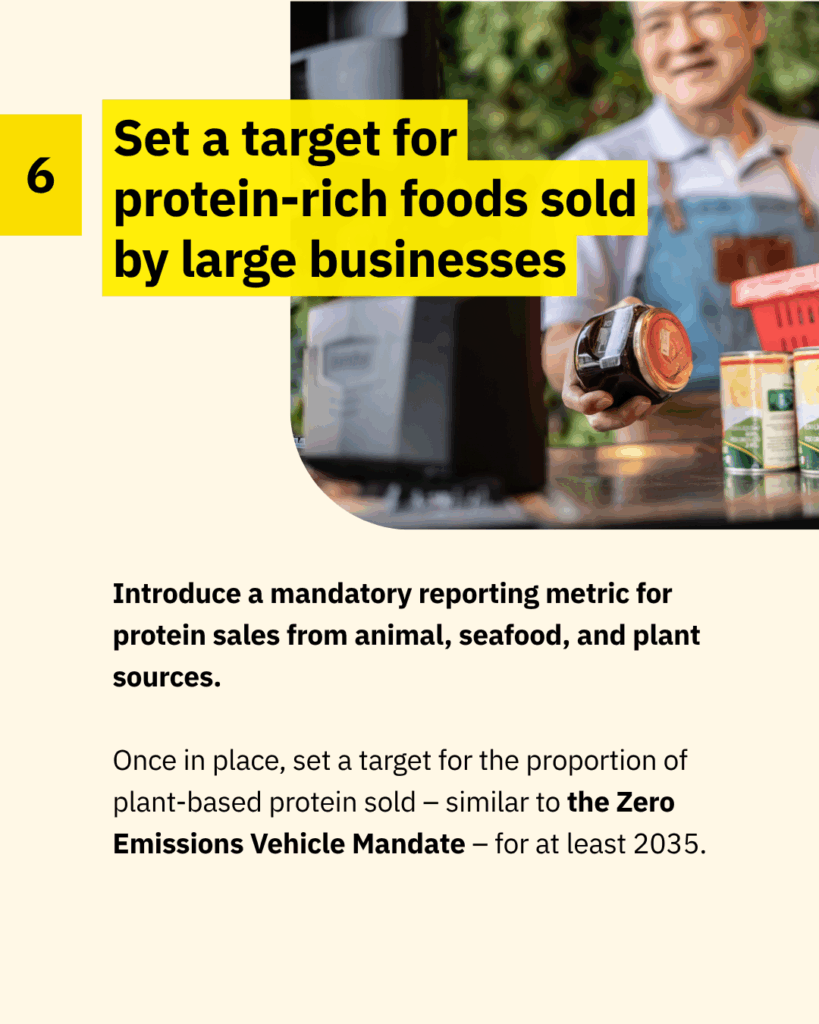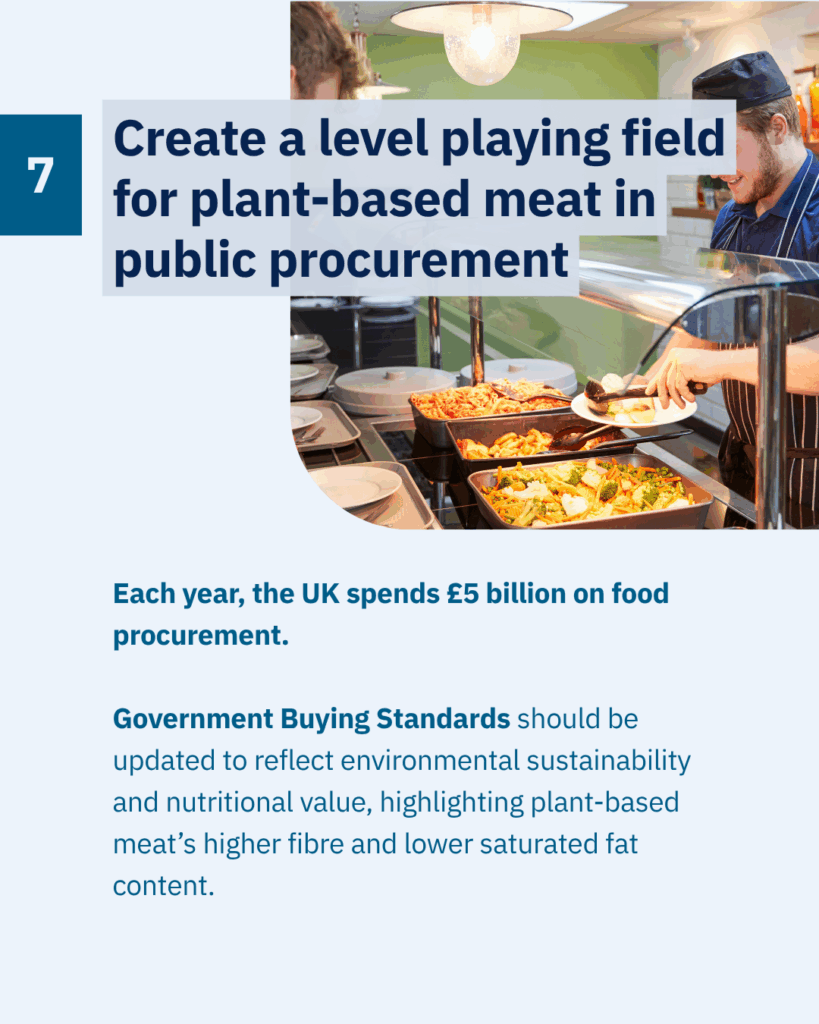As food prices rocket, the UK government can kick-start supply chains to help farmers benefit from plant-based meat
Supermarket shelves bulge with more choice than ever, but they mask an uncomfortable reality – our food system is becoming increasingly volatile.
24 October 2025
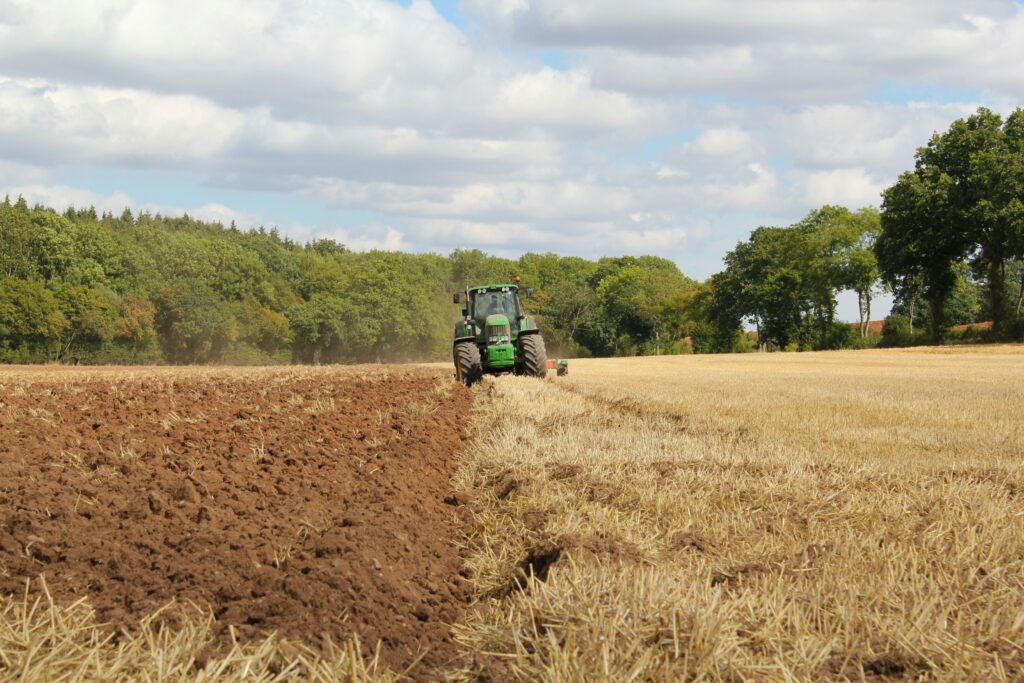
Our supermarket shelves seem to bulge with more choice than ever, but this masks the uncomfortable reality that our food system is becoming increasingly volatile.
Thanks to a cocktail of climate change, pandemics, military conflicts and trade wars, shocks to the food system are only likely to become more frequent. A core mission of the UK’s new food strategy, the Good Food Cycle, is to prepare us for this.
The task is urgent. The skyrocketing price of beef is just one example of how volatility is driving up the cost of everyday food – but olive oil, chocolate, and eggs have also been affected.
As new research from Green Alliance argues, protein diversification is critical for building a more resilient food system. Developing alternative proteins like plant-based meat is an important part of this, and a government interested in food security should shape supply chains to ensure they are diverse and resilient.
Unlocking new plant-based protein sources
Currently, protein crops such as peas and beans are mostly grown for one reason – to feed animals.
Soy dominates globally, with an estimated 77% used to feed animals and just 7% used for foods like tofu and soy milk. In the UK, where soy isn’t grown commercially, 91% of peas are fed to animals, mostly pigs and chickens.
A relatively new market for these crops is as ingredients in plant-based meat. We analysed the top 30 products in UK supermarkets in 2024 (excluding Quorn, which is made from fungi rather than plants), and found that 57% were soy-based, and 13% were soy and wheat-based. Peas have recently gained popularity as a core ingredient, including among newer brands like Beyond and THIS, but remain a fringe option.
So why don’t more plant-based meat products use protein sources that can be grown in some parts of the UK, such as peas, fava and lupins?
The answer is complex, and involves long-standing issues like the dominance of cereal production on UK cropland and the relative market certainty of crops like wheat and barley – forces shaped by decades of agricultural policy and globalised supply chains.
Pulse breeding programmes and agronomic knowledge are also further behind those of cereals. Efforts to address this are ongoing, such as the Department for Environment, Food and Rural Affairs’ Pulse Crop Genetic Improvement Network and the translational work of the Processors and Growers Research Organisation. Research into underutilised crops, like lupins, is promising but yet to translate into widespread commercialisation.
Providing greater certainty for farmers
One problem the government could help to resolve is the lack of infrastructure to extract protein from pulses, which means an important element needed to build a homegrown British supply chain is missing.
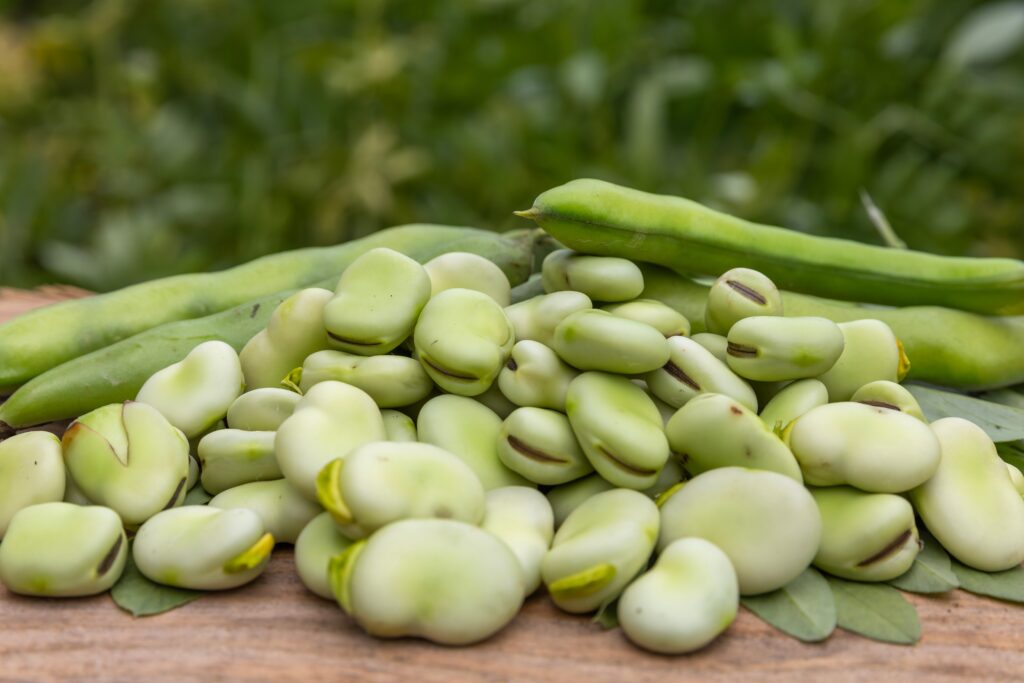
Fractionation – breaking the entire crop into components such as protein, starch, and fibre – is essential for producing plant-based meat but requires different equipment than that used in processes like hulling and drying, which are better established in the UK.
This suggests a market failure, whereby farmers aren’t incentivised to grow pulses for premium markets, as they cannot be certain of demand due to insufficient infrastructure, while plant-based meat companies can’t access British ingredients and therefore don’t stimulate demand.
In Ireland, Dr Ewen Mullins, head of crop science at Teagasc, the Agriculture and Food Development Authority, and his team have been researching ways to enable farmers to grow more fava beans for human consumption. To add value for farmers, he suggests a scaled-up protein crop supply chain could work in a similar way to the system used by the brewing industry.
Barley growers take their grain to a yard that pays more for crops that meet the criteria needed for malting, and provides a lower price for crops only suitable for animal feed. In the same way, Mullins suggests plant-based meat producers should be willing to pay a higher price for high-quality peas and beans that can be sent to the local fractionation mill, rather than those destined for animal feed. In essence, with the right market incentives in place, farmers should earn higher prices for better ingredients.
Importantly, climate, disease and pests all limit whether a protein crop will be deemed suitable for food or animal feed. Including crops like peas in rotations can improve soil health by fixing nitrogen, helping to increase farm resilience to these challenges – but a lack of fractionation infrastructure is likely to be another reason why high-value protein markets remain closed off for UK farmers.
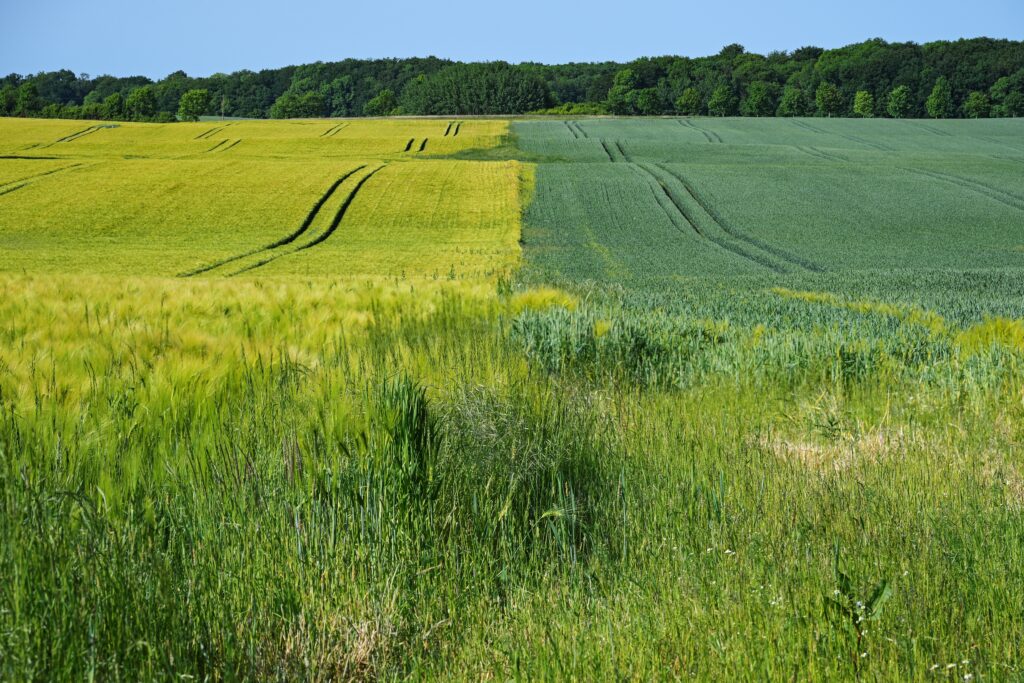
As Novara’s oat processing plant in Northamptonshire demonstrates, new crop processing infrastructure can shift supply chains relatively quickly. Since the mill opened in 2023, Alpro has switched its main oat drink product to 100% British oats grown nearby.
There are some promising signs. ATURA Proteins produces protein from British-grown fava beans, while an Innovate UK-funded project has been exploring how to scale the UK fava supply chain for use in plant-based foods.
But other countries are taking this opportunity more seriously. Swedish agricultural cooperative Lantmännen is investing 1.2 billion krona (€105 million/£93 million) in a new facility for pea and fava. And a programme backed by the Canadian Government has an ambitious plan to create a CAN$25 billion (€15 billion/£13 billion) plant protein sector, which recognises the economic potential of high-quality protein ingredients:
“…by creating high-value products domestically, we offer a unique product (i.e., protein isolate) that cannot be as easily sourced as a commodity. This positions Canada and our products as more exclusive.”
Time to address gaps in plant protein infrastructure
The Good Food Cycle – which aims to make Britain a “world leader in sustainable, healthy food production” – presents a fresh opportunity to bring similar ambition to the UK.
As we set out in our recommendations, the government should bring together farmers, food businesses, researchers and investors to identify the most pressing gaps in the UK’s plant protein infrastructure.
By using its convening power, the government can drive the market forward and potentially take some of the risk out of private investments with little cost to the exchequer.
Meanwhile, our proposed £30 million Plant-Based Innovation Fund includes a funding call for partnerships between farmers, crop processors, researchers and plant-based brands, designed to commercialise homegrown crops for plant-based products. The Farming Innovation Programme, reaffirmed in the Industrial Strategy, also needs a stronger focus on plant proteins for human consumption.
Using British crops supports British farmers, capturing environmental and economic value, and helps to shield our protein supply from the volatility that will characterise food production in the years ahead.
With the plant-based meat sector still in its infancy, the government has an opportunity to shape it into an engine for economic growth and food security.
